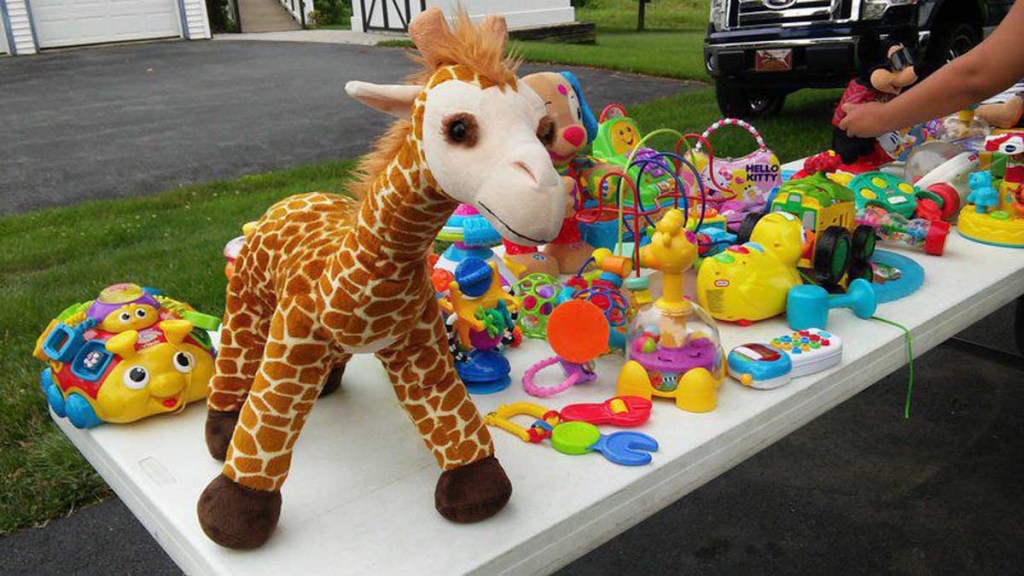Secondhand goods and germs
Published 3:30 pm Tuesday, July 12, 2016

- Sheets, blankets, and even many stuffed animals can be tossed in the washer. If they can’t, it’s probably better to pass on them.
Yard sales. Treasure troves of low-priced baby and child products … or breeding grounds for germs and pests?
“I think second-hand items are not only an opportunity to save money but also good for the environment as a chance to recycle and re-use,” said Heather Lewis, associate vice president of the Division of Quality and Safety at Geisinger Health Systems in Pennsylvania. “You just have to be careful.”
Being careful starts with a little research. Things like cribs and car seats can be great yard sale finds if you know what to avoid.
“If buying baby equipment, look online (before heading out to the sale) to see if there are recalls,” Lewis said. “Really do your homework.”
She pointed out that cribs with side rails that can be raised and lowered used to be acceptable, but are now considered a safety issue due to the tendency of the drop side rail to partially detach from the crib, creating a gap between the mattress and the rail where a baby can get stuck.
Bumper pads, the must-have decorative bedding item in ’80s and ’90s nurseries, are now discouraged due to the possibility of an infant suffocating by getting trapped against the pads.
“There are new (guidelines) that you want to make sure you’re abiding by,” Lewis said, adding that babies are defenseless and rely on their caregivers for protection.
Most people know to pass on a car seat that has been involved in a vehicle accident because the seat may have hidden damage that decreases its protective ability in a second crash. But beyond that, look for signs of excessive wear.
“Really think about it,” Lewis said. “Check the latches to make sure they’re secure.”
“Not only are used seats unlikely to come with the manufacturer’s instructions — vital for correct installation — but they could be missing important parts, have been involved in an accident, fall short of current safety standards, or have been recalled due to faulty design,” as stated at babycenter.com. “Moreover, plastic gets brittle as it gets older, so a seat that’s too old could break in a crash.”
Car seats and strollers require similar inspections. Check straps for wear and tear. Watch for cracking on plastic parts. Look for places that might pinch a child’s skin.
Beyond basic safety features, be on the lookout for sanitizing capabilities … no one wants to bring home germs, bed bugs, or other pests. See if cloth liners and padding can be removed, then launder in high heat with a good detergent.
Plastic areas can be washed with a solution of bleach and water – using bleach alone is too strong.
“Children put things in their mouth,” Lewis said. “That’s how they explore the world.”
Use no more than a cup of bleach to a gallon of water, and with today’s super-concentrated bleaches, a half-cup or quarter-cup will likely do. If you do use straight bleach, be sure to rinse and dry thoroughly before letting a baby or young child interact with it.
Sheets, blankets, and even many stuffed animals can be tossed in the washer. If they can’t, it’s probably better to pass on them. Even crib mattresses can be wiped or sprayed with sanitizer, as long as they’re not cloth mattresses.
What about breast pumps or nursing equipment?
“I wouldn’t say no, but I would be careful of it,” Lewis said. “Just make sure it can be sanitized.”
Finally, take advantage of modern technology. If you come across a steal of a deal that you haven’t yet researched for recall or safety information, tap into your smartphone’s web browser.
“Even if you’re out there at a garage sale or yard sale, Google it right there,” Lewis said.
With a little information you can save money, help the environment, and provide well for the tiny tots in your life.
Herman writes for the Sunbury, Pennsylvania Daily Item.

